There are over 2,500 species of venomous snakes on Earth and some of them are pretty darn dangerous. But what you might not know about the world’s top ten most venomous snakes is that they all have certain traits in common – they can all strike at lightning speeds and they all have neurotoxic venom that paralyzes their prey without killing it. Here are 10 things you might not know about these ten most dangerous snakes on the planet…
1. Mojave Rattlesnake

500-1000 mg/kg of LD50 – That is 5000 to 10000 times more venom than a Rattle Snake! The Mojave rattlesnake produces some of the world’s most potent and dangerous venom, but how does it compare to other poisonous snakes? It has been ranked one of America’s top 10 deadliest snakes. However, despite its notoriety and potency, there are still many interesting facts about Mojave rattlesnake that you may not know.
2. Coral Snake
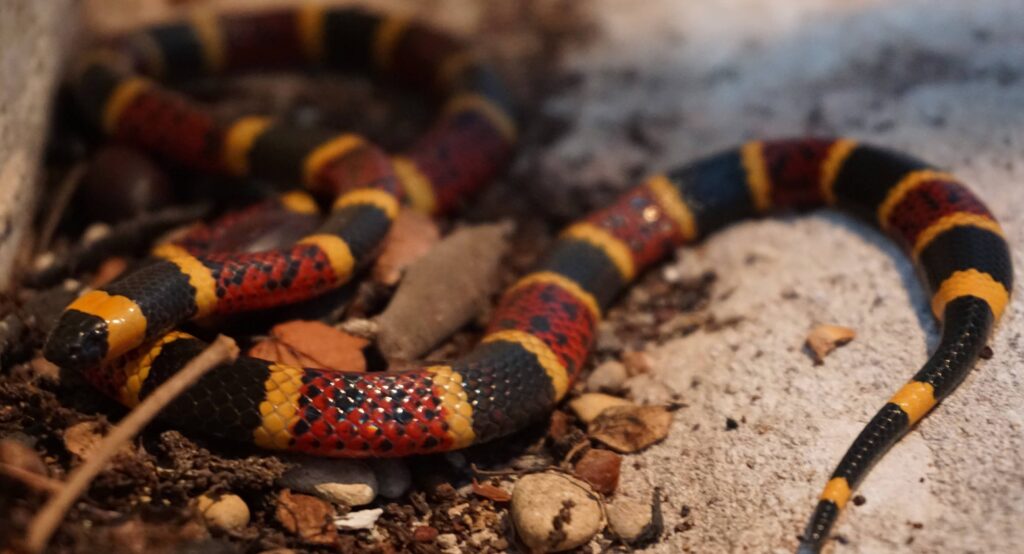
This poisonous beauty is one of America’s deadliest snakes. Although coral snakes have a more potent venom than any other type of snake, their bites are rarely fatal to humans because they don’t strike out when threatened. Usually, they coil up and remain still before striking forward only when touched or if disturbed in some way. Coral snakes can be identified by red, yellow and black rings with heads shaped like an arrowhead. Their bite, which contains neurotoxins that affect muscle coordination, is potentially deadly and should be treated immediately.
3. Canebrake Rattlesnake
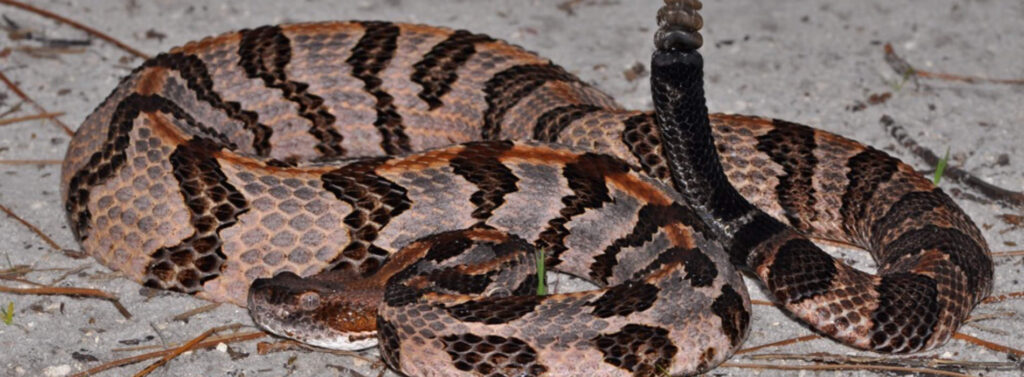
Let’s get a little wild! The Canebrake Rattlesnake is found in Alabama, Arkansas, Georgia, Louisiana, Mississippi and Tennessee. It lives in deciduous forests, swamps and wet grasslands and mainly feeds on rats and mice but will also occasionally consume squirrels. While any snake bite can be fatal if left untreated, Canebrake bites are particularly dangerous as they secrete a toxin that blocks blood clotting by preventing platelets from adhering to one another (platelets are small discs found in your blood which help it to clot). As a result of low levels of coagulation factor (Factor VIII), many victims of Canebrake bites bleed to death before reaching medical care.
4. Tiger Snake
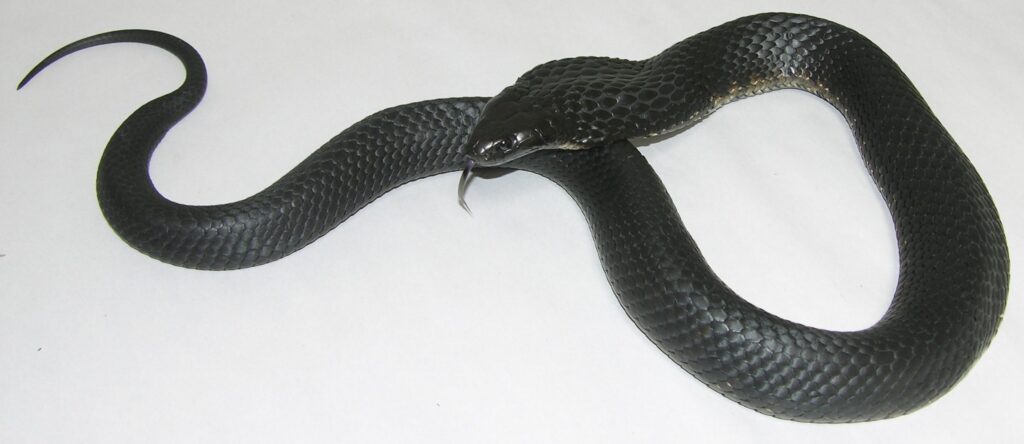
Australia-borne tiger snakes are some of the most venomous and dangerous in all of Australia. They are a type of highly aggressive elapid, which means they can move very quickly over short distances. On top of that, tiger snakes can inject their prey with very large amounts of venom with a single bite. This can result in what is commonly known as a tiger snake attack which is easily one of the most painful bites one can experience while living in Australia. Tiger snakes also produce one of Australia’s most potent venoms and it affects humans differently than other types of snake species.
5. Fer-de-Lance
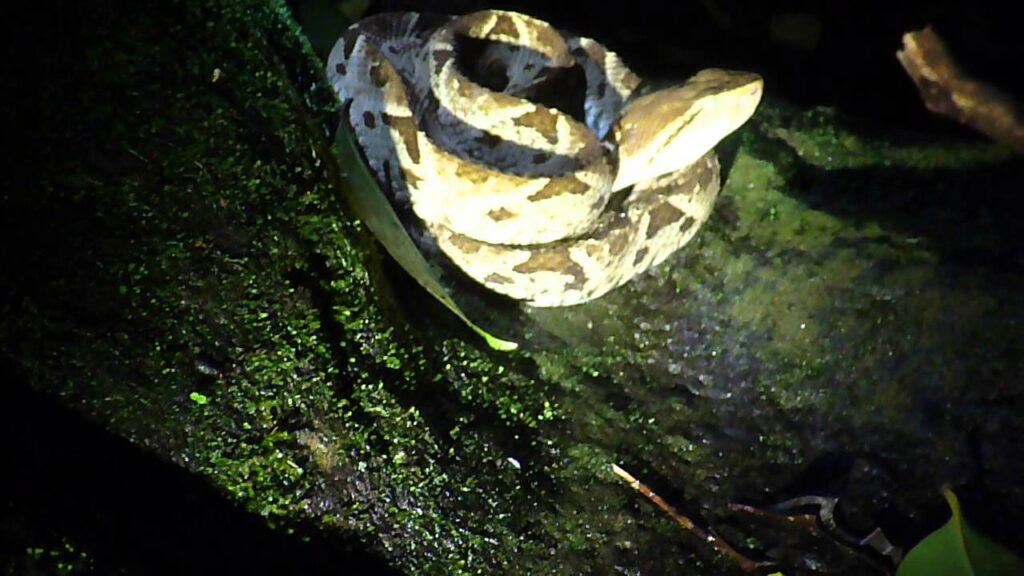
The fer-de-lance is among one of South America’s most deadly serpents, said to be responsible for over 50% of snake bite fatalities in Panama. Luckily, their habitat is limited to tropical parts of Central and South America. As its name suggests, it uses its sharp front fangs to pierce prey before injecting a large amount of venom via a grooved hollow fang that extends down beyond its mouth. This species is known for being very aggressive when disturbed or threatened and can reach up to 7 feet long.
6. Taipan Snake
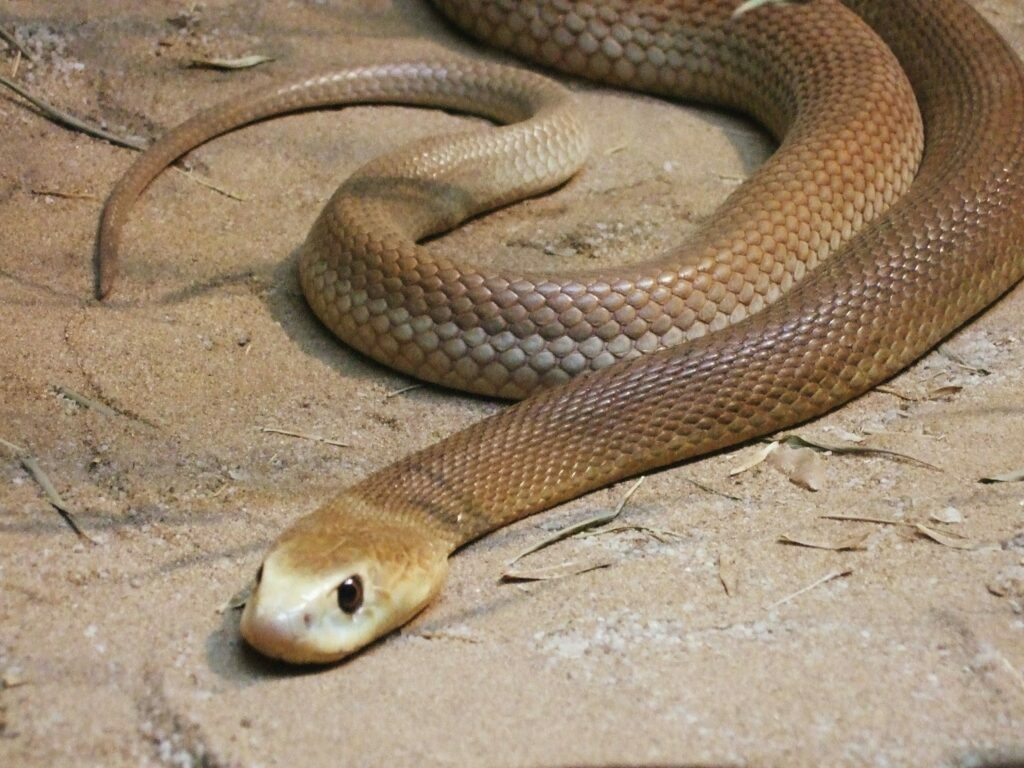
Imagine stepping out of your tent into a dark forest in Australia to discover a creature unlike anything you’ve ever seen. This terrifying, bright orange and black snake is about 3 meters long and has two small fangs visible on its under-bite. In addition to paralyzing venom that attacks nerve cells, Taipan snakes have heat-sensing pits near their eyes to detect their prey. Although humans are not on its menu, it still holds enough poison to kill 100 people within an hour. Ouch!
7. Death Adder
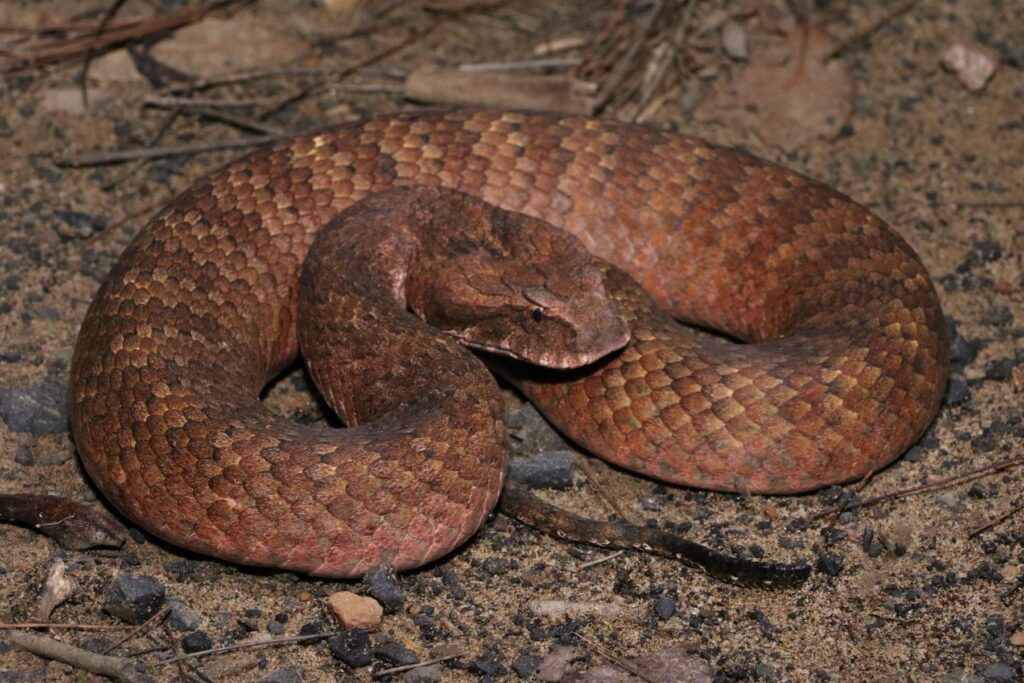
Unfortunately, little is known about death adders. Their habits are mysterious, and no specific scientific studies have been conducted to determine their population size or range. As far as scientists can tell, they spend their lives underground in burrows that provide protection from extreme temperatures and flooding. Because they are so hard to find and do not come out during daylight hours, death adders avoid most predators by living in isolation. Fortunately for humans, they seem to prefer staying hidden in these tunnels, where they enjoy hunting small invertebrates like worms and lizards.
8. Eastern Brown Snake
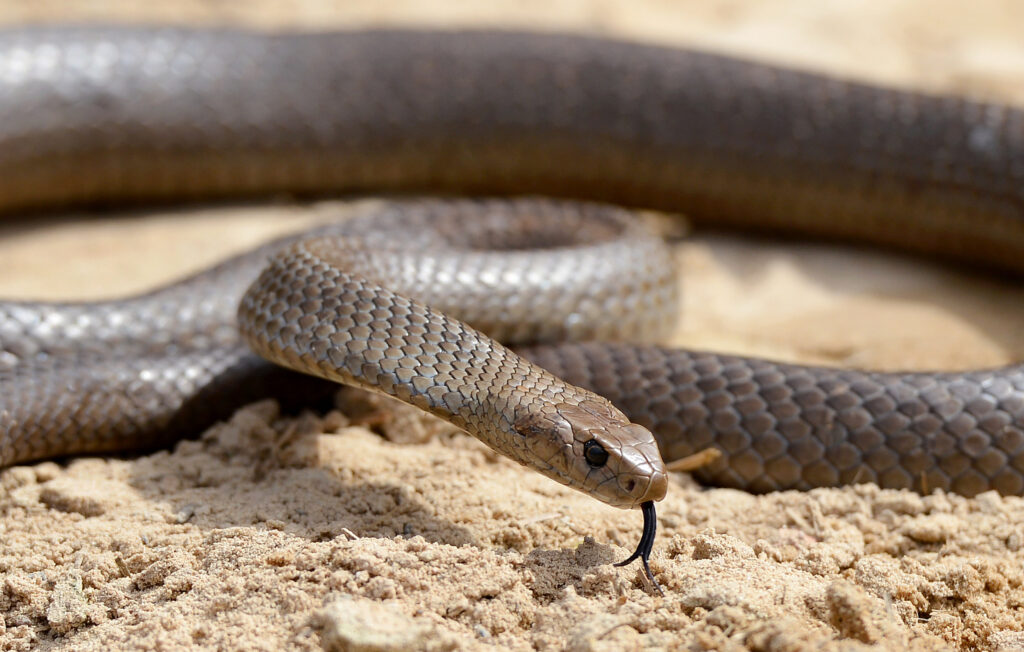
These snakes usually grow to a length of between one and two meters (3.3-6.5 feet). They can be dangerous, though their venom is not as potent as many of their counterparts’. While some believe that these snakes are not aggressive, they have been known to attack humans. If you ever come across one, back away slowly and avoid making any sudden movements that could scare it into attacking you.
9. Black Mamba
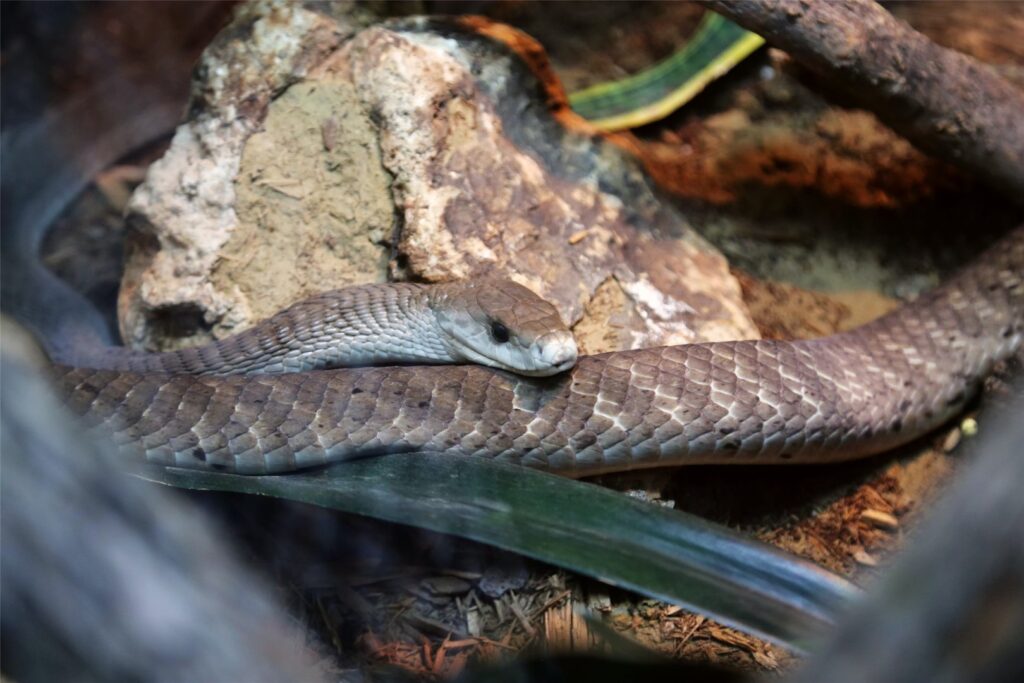
When it comes to snake bites, there are three different kinds of venom: hemotoxic, neurotoxic and cytotoxic. But only neurotoxins kill their victims within an hour. This makes black mamba venom exceptional because it’s one of a few snakes that possess both cytotoxic and neurotoxic properties. On top of that, it’s been shown to be resistant to some antivenoms and there are no known effective ways to prevent or treat bites from black mambas due to their incredibly potent neurotoxin which is so potent that just 2 mg will kill about ten thousand mice! It is definitely number 9 among world’s most dangerous snakes as well as number 1 among most dangerous African snake species.
10. Western Bushmaster
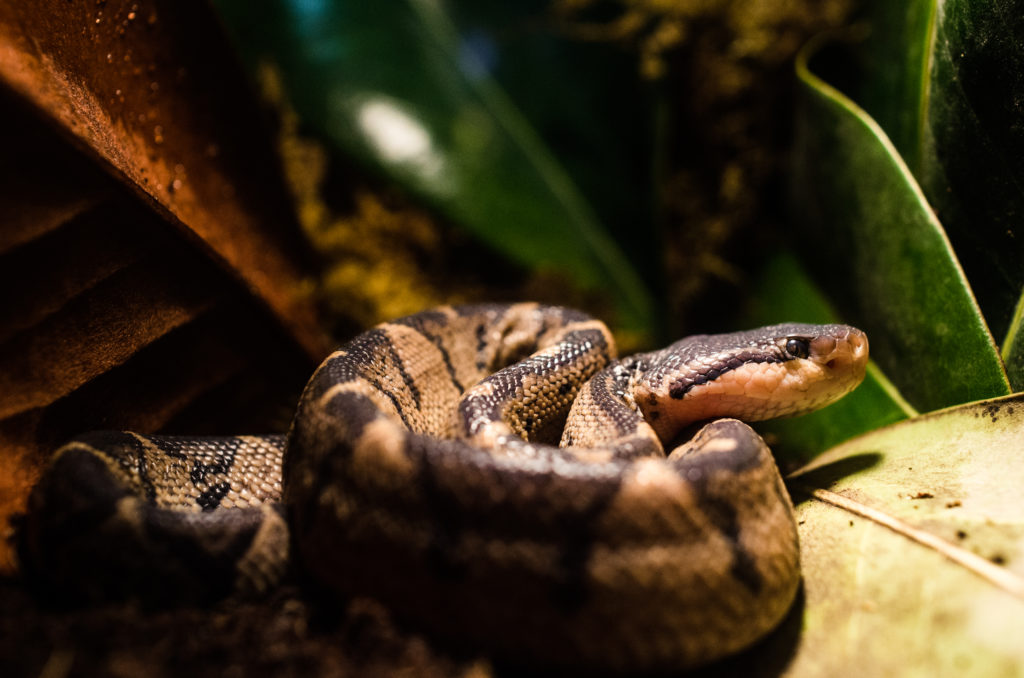
This snake is considered to be one of only two most poisonous snakes in North America. Luckily, these vipers are not very large, rarely exceeding 5 feet in length. They are native to Brazil and Mexico and inhabit tropical rainforests, where they typically hunt at night for food. These snakes also produce some of most deadly neurotoxins found in any animal species on Earth; their venom is 100 times more potent than that of a rattlesnake. If you encounter one of these creatures, your best chance for survival would be to curl up into a ball and hope it loses interest before delivering its toxic payload.
Interested In Reading Articles On Deforestation in the world
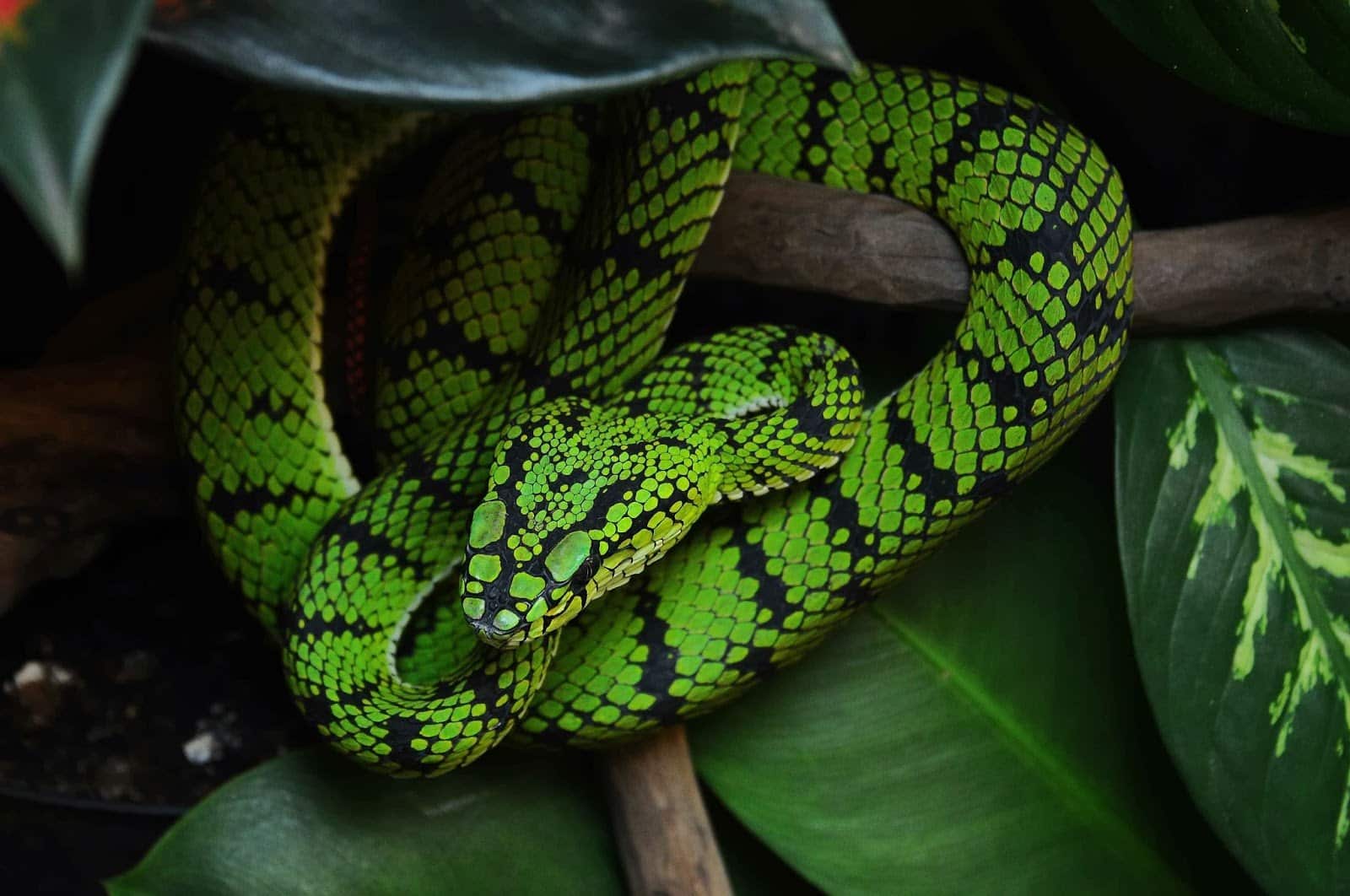
1 thought on “You Not know about the 10 most venomous snakes in the world.”
Comments are closed.